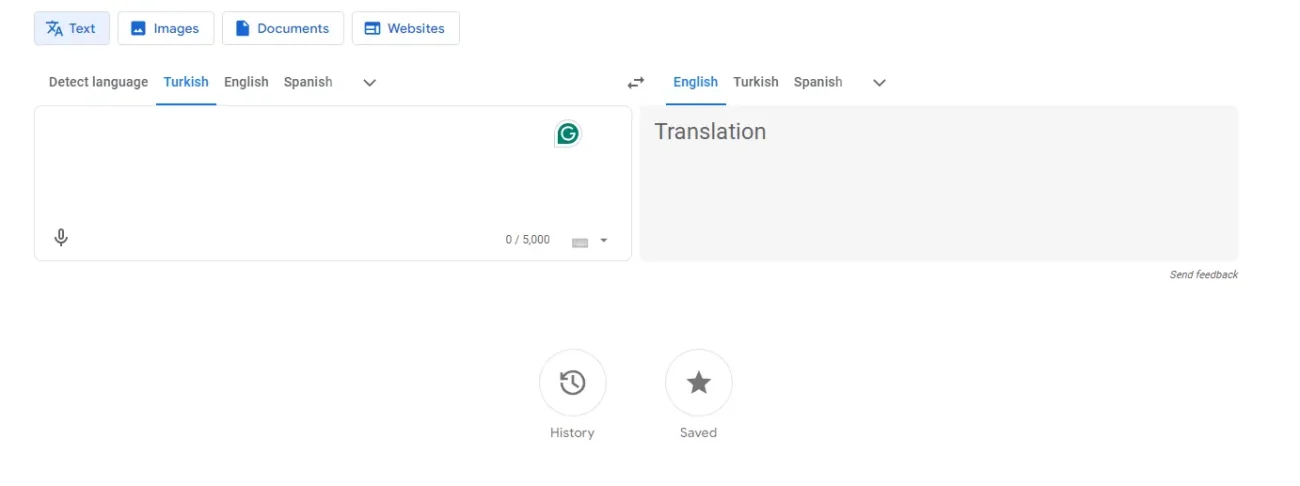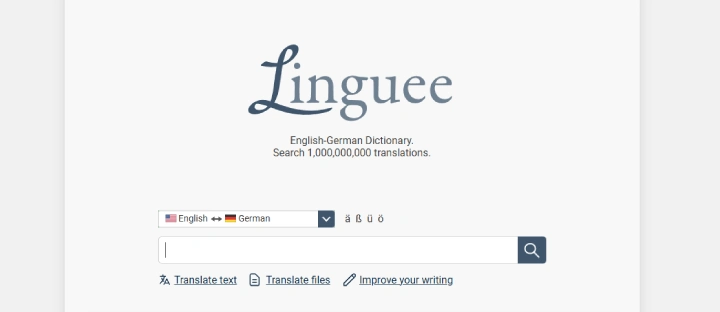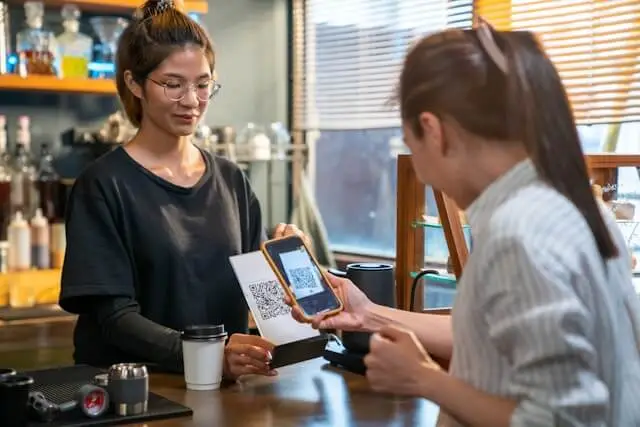Best Translation Apps in 2025: A Complete Guide

Translation & localization are mostly automated as of 2025, thanks to speech recognition and AI technologies. For translators, businesses or individuals looking for translation tools to solve their problems, we have compiled the 10 best translation apps with various pricing points, useful features, and reliable accuracy.
Let's start with a table to present the summary of the best translation apps.
Compare Best Translation Apps
| Name | Free/Paid | Strengths | Weaknesses | Rating |
| Google Translate | Free | Supports over 100 languages, instant camera translation, voice input, offline mode | Sometimes inaccurate with complex sentences or idioms | ⭐⭐⭐⭐⭐ |
| Microsoft Translator | Free | Reliable translations, ideal for everyday, travel, and business communication | Completely free to use with no subscription required | ⭐⭐⭐⭐⭐ |
| DeepL | Free & Paid | Accurate translations, great for formal and professional contexts | Limited language support (compared to Google Translate), paid features needed for pro-level access | ⭐⭐⭐⭐ |
| iTranslate | Free & Paid | Voice-to-voice translation, offline mode, wide language support | Full features require subscription | ⭐⭐⭐ |
| Yandex Translate | Free | Wide language coverage, supports text, website, and document translation. | Accuracy for less common languages can be weaker compared to specialized tools like DeepL. | ⭐⭐⭐⭐ |
| Papago | Free | Tailored for Asian languages, image and voice translation | Limited language support for non-Asian languages | ⭐⭐⭐⭐ |
| Reverso | Free & Paid | Good for contextual translations, includes phrasebook and dictionary | Limited language support, paid features for premium access | ⭐⭐⭐ |
| Linguee | Free | Ideal for professional translations, shows contextual examples | Limited interactive features like voice input or camera translation | ⭐⭐⭐ |
| Translate Now | Free & Paid | Voice, text, and camera translation, easy-to-use | Ads in free version, premium needed for full features | ⭐⭐ |
| PROMT | Free & Paid | Designed for professionals, with specialized dictionaries and precise text translations | Limited free features, premium required for full functionality | ⭐⭐⭐ |
10 Best Translation Apps Overview
1. Google Translate

Overview: Google Translate is one of the most widely used translation tools available today. It supports over 100 languages and offers multiple input methods, including text, voice, and camera translation. The app also supports offline translations for certain languages, making it a convenient option for travelers and users with limited internet access. With real-time conversation translation and instant camera translation, Google Translate is versatile and easy to use.
- Strengths: It covers an extensive range of languages, and its instant camera translation and voice input features are very handy. The offline mode is useful for situations with no internet access.
- Weaknesses: It sometimes struggles with complex sentences or idiomatic expressions, resulting in inaccurate translations.
- Best for: General translation needs, travelers, casual use.
2. Microsoft Translator

Microsoft Translator is a reliable translation app that supports over 70 languages. It offers text-to-text translation as well as voice, image, and real-time conversation translation. With seamless integration into Microsoft products like Office, Teams, and Bing, it’s especially convenient for both personal and professional use. Offline translations are also available for many languages, making it useful for travelers.
- Strengths: Strong integration with Microsoft’s ecosystem, accurate translations for text and documents, and support for both casual and business contexts.
- Weaknesses: Fewer advanced features compared to specialized apps like DeepL, and accuracy can vary for less common languages.
- Best for: Travelers, professionals, and users who rely on Microsoft products.
3. DeepL Translator
Overview: DeepL Translator is renowned for its high accuracy, particularly in professional and formal translations. While it supports fewer languages than Google Translate, it excels in producing high-quality translations for more nuanced and context-sensitive text. DeepL is often used for translating legal, academic, or business documents, where precision is critical. The premium version unlocks additional features like larger document translations and improved data privacy.
- Strengths: High accuracy, especially for formal and professional contexts. Great for translating documents with nuanced language.
- Weaknesses: Limited language support compared to other translation tools like Google Translate. Full features require a paid subscription.
- Best for: Professional use, formal documents, and business translations.
4. iTranslate

Overview: iTranslate is another popular translation app with broad language support and robust features like voice-to-voice translation. The app also includes an offline mode for translating languages without an internet connection, and it supports text, voice, and image translations. The premium version adds features like verb conjugations and website translation.
- Strengths: The voice-to-voice translation is excellent for real-time conversations. Offline mode supports a variety of languages.
- Weaknesses: The free version has limitations, and some features like verb conjugation require a premium subscription.
- Best for: Casual use, travelers, voice translations.
5. Yandex Translate

Yandex Translate is a robust translation app that supports more than 90 languages. It specializes in fast and reliable text-to-text translation, with additional features like website translation and predictive typing to help users find the right words. The app also provides offline translation for several languages, making it a handy choice for both everyday use and travel.
- Strengths: Wide language coverage, easy-to-use interface, and the ability to translate full websites and documents.
- Weaknesses: Some translations for less common languages may lack nuance compared to apps like DeepL.
- Best for: General users, travelers, and anyone looking for a versatile text translation tool.
6. Papago

Overview: Developed by Naver, Papago focuses on translation between Asian languages, such as Korean, Chinese, and Japanese, while also supporting several other major languages. It offers text, voice, image, and conversation translations, with an emphasis on accuracy in translating between Asian languages. It also features an offline mode and text-to-speech functions.
- Strengths: Tailored specifically for Asian languages, with excellent accuracy for Korean, Chinese, and Japanese.
- Weaknesses: Language support is limited when translating between non-Asian languages.
- Best for: Travelers or professionals dealing with Asian languages.
7. Reverso
Overview: Reverso is a unique app that offers contextual translations, meaning it provides examples and translations based on real-world usage. This makes it particularly valuable for users who need to understand the nuances of words and phrases in context. The app also includes features like a phrasebook and verb conjugations, making it useful for language learners.
- Strengths: Provides contextual examples for translations, making it ideal for learning languages and understanding nuances.
- Weaknesses: Language support is somewhat limited, and premium features are behind a paywall.
- Best for: Language learners, professional use, formal contexts.
8. Linguee

Overview: Linguee offers an extensive database of bilingual texts, providing users with accurate translations based on context. Unlike other translation apps, it’s not solely focused on automatic translation; instead, it provides real-world examples of how words and phrases are used. This is particularly useful for users looking for high-quality, precise translations in professional settings.
- Strengths: Ideal for professional translations, offering contextual examples for more accurate results.
- Weaknesses: Doesn’t include interactive features like voice input or camera translation, and is more suited for text-based translations.
- Best for: Professional use, academic or legal translations.
9. Translate Now
Overview: Translate Now offers text, voice, and camera translations for a wide range of languages. The app is simple to use and provides quick results, making it an excellent choice for travelers. The free version includes basic translation functions, while the premium version unlocks additional features like verb conjugations and offline translations.
- Strengths: Offers a wide range of input methods, including voice and camera translation. Easy to use for beginners.
- Weaknesses: Ads are present in the free version, and premium features are locked behind a paywall.
- Best for: Travelers, casual users, quick translations.
10. PROMT Translator

Overview: PROMT Translator is a long-established translation tool known for its accuracy in professional and business contexts. It supports multiple languages and specializes in text-to-text translation, with tailored dictionaries for industries like finance, medicine, and law. PROMT also provides offline desktop versions, making it a reliable choice for users who need secure and precise translations without relying on cloud services.
- Strengths: High accuracy in professional settings, customizable dictionaries, and reliable offline options.
- Weaknesses: Interface feels more utilitarian compared to other modern apps, and free features are limited compared to the premium versions.
- Best for: Business professionals, academic users, and anyone needing precise, context-specific translations.
How Translation Apps Have Evolved

Translation apps have evolved from basic word-for-word tools to sophisticated AI-powered systems. Early apps struggled with context and grammar, often producing awkward translations. With advancements in AI and natural language processing (NLP), modern apps like Google Translate and Microsoft Translator (considered some of the best translation apps) now handle complex sentences, voice input, and even real-time conversations. Features like camera translation and offline mode have further expanded their utility, making them indispensable for travelers, professionals, and language learners.
Why People Should Use Translation Apps
In today’s fast-paced, globalized world, translation apps are more than just handy tools—they’re essential companions for everyday life. Whether you’re traveling, studying, or doing international business, these apps make cross-language communication seamless.
- 🗣️ Break language barriers: Instantly understand conversations, signs, menus, or documents in just a few taps.
- 🚀 Convenience on the go: Apps like iTranslate and Papagoeven offer offline support, so you’re never stuck without translations—even without internet.
- 🎓 Learn languages smarter: By showing real-world usage, contextual translations, and even verb conjugations, these tools double as personal language tutors.
- 🤝 Connect globally: From casual chats with new friends to professional meetings across borders, translation apps enable smoother, more authentic communication.
🌐 Ultimately, translation apps empower you to explore the world with confidence, bridging gaps that once felt impossible.
🤖 AI's Impact on Translation and Localization
Artificial Intelligence has completely transformed the translation landscape. Tools like DeepL and Google Translate no longer just swap words—they analyze context, idioms, and cultural nuances to deliver translations that feel natural and human-like.
- 🧠 Smarter understanding: AI models learn from millions of real-world examples, helping them recognize tone, intent, and even slang.
- 📈 Constant improvement: With machine learning, these apps get better over time, improving accuracy with every update.
- 📝 Professional reliability: From business contracts to academic papers, AI-powered translators now handle complex grammar and industry-specific terminology with impressive precision.
- 🌍 Bridging cultures: Beyond words, AI enables more authentic communication, supporting localization efforts for businesses expanding globally.
✨ The result? Translation apps powered by AI aren’t just convenient—they’re trustworthy partners for travelers, learners, and professionals alike.
Auto Subtitles, Dubbing and Live Translation in 125+ Languages
FAQ
What is the most accurate translator app?
DeepL is widely considered the most accurate for translating nuanced and formal text, especially in professional settings. For video translations, we recommend Maestra AI for accurate subtitles and AI dubbing, including real time translation.
Is there a better app than Google Translate?
Google Translate is certainly one of the leading entities when it comes to translation. Other worthy opponents are DeepL, Microsoft Translator, or Papago for Asian languages.
Is DeepL better than Google Translate?
DeepL is better for formal translations and European languages, while Google Translate is superior for handling a wider variety of languages and different types of input (voice, image).
What is the most accurate free translator?
Microsoft Translator and Google Translate are both highly accurate and free, with Microsoft Translator being strong for conversation translation and Google Translate offering broader language support. For video translations, Maestra AIMaestra AI has a free trial for anyone to take advantage of AI-powered localization.
Is there an AI better than Google Translate?
Microsoft Translator or Papago can be better in certain contexts, like real-time conversations or translating between Asian languages. And Maestra AI is better for content localization, in both video and audio translations.
What translator is 100% correct?
No translator is 100% accurate. While Google Translate, Microsoft Translator, and DeepL offer high accuracy, all machine translations have limitations with complex sentences and idiomatic expressions, as of the year 2025.

